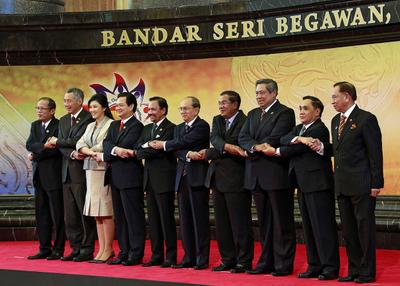In particular, ASEAN has attempted to model its Committee of Permanent Representatives (CPR) on the EU’s Committee of Permanent Representatives (COREPER). But can the consensual modus operandi in COREPER be replicated by ASEAN simply by institutional mimesis?
A basic, and familiar, question that has to be faced is whether the EU is sui generis. Two themes are pertinent here: the perceived ‘inadequacy’ of the state in post-war Europe and the relevance for European integration of factors specific to the European continent. In post-war Europe, demands for welfare internally, and security threats externally, were increasing. So governments were under pressure from public opinion to deliver on these two quintessential functions of the nation-state. European states looked to each other for support, and this led to alliances in the security and economic sectors. In effect, the European state was rescued from its own demise by the mechanisms of European integration.
At the same time, five factors specific to post-war Europe contributed to the impulse toward European integration. First, recent memories of conflict underpinned collective security arrangements. These varied from tight military alliances to more-fluid non-alignment. But all shared a common concern to optimise national security by reaching beyond the borders of the state. Second, Europe’s high population density, numerous national borders and notions of national sovereignty made functional cooperation imperative to overcome the challenge of geographic proximity. Third, liberal democracy became a badge of West European identity, separating it from the communist east. Fourth, notions of the ‘welfare state’ have provided a focal point for cross-border reciprocity as an increasingly mobile workforce sought common entitlements to welfare. Fifth, EU citizenship, a reflection of a value-laden consensus that does not exist in any other regional organisation, provides a transnational framework for the protection of numerous civic rights. Many of these are embedded in EU law and defended by the European Court of Justice.
What, then, of ASEAN? Its membership is extremely diverse in wealth, size and political orientation. And there is much less regional interdependence than in the EU. Modes of decision making are also based on a rejection of supranationalism, in contrast with the EU. This contrast is exemplified when comparing the EU’s COREPER with ASEAN’s CPR.
COREPER is based on a habit of negotiating consensus away from public scrutiny, although the committee is an integral part of the EU’s decision-making machinery. In ASEAN, the CPR could develop along the lines of COREPER in the sense that socialisation between its members in Jakarta could radiate back toward national capitals and act as a dynamic for greater integration. ASEAN’s CPR was modelled on the EU’s COREPER — both prepare meetings for their respective councils. However, the outputs from their meetings are quite different: COREPER deliberations result in binding legislation, unlike those of the CPR. It is possible that there could emerge a pattern of close linkages in the ASEAN case like that which exists between COREPER and the Council of the EU secretariat, and there is evidence that these meetings within ASEAN are proving fruitful. It is also possible that close relations could be developed between the ASEAN CPR and domestic ministries, as in the EU.
Well-established habits of cooperation among EU member states are echoed by the informal channels of ASEAN diplomacy. Both seek to work out common positions behind the scenes and minimise the necessity of cumbersome institutional procedures. Integration in the EU has been propelled by setting deadlines which galvanise elites toward greater commitment. By adopting EU nomenclature for new institutions and processes, ASEAN has set itself ambitious goals for a new dynamism. The risk is that frustration and disillusionment can set in if goals are not achieved. Moreover, public awareness of ASEAN as a regional body is minimal; and although the EU suffers from a ‘democratic deficit’ it is at least felt that the public ‘ought’ to be more involved: the only question is how.
In sum, the supranational assumptions underlying the decision-making processes of the EU, which ASEAN now partly reflects, may conflict with ASEAN’s carefully preserved intergovernmentalism. Yet ASEAN may well develop an enduring institutionalisation of its decision-making mechanisms and procedures. After all, the EU developed its own co-existence of intergovernmentalism and supranationalism. The next few years will see the experiment of the CPR be tested and possibly measured against the EU — but we can expect an ASEAN style to be imprinted on this new coordinating body.
Edward Moxon-Browne is a professor at the Centre for European Studies, University of Limerick.
Philomena Murray is an associate professor at the School of Social and Political Sciences, University of Melbourne.
This is an abridged version of an article published here in the Journal of Common Market Studies.

